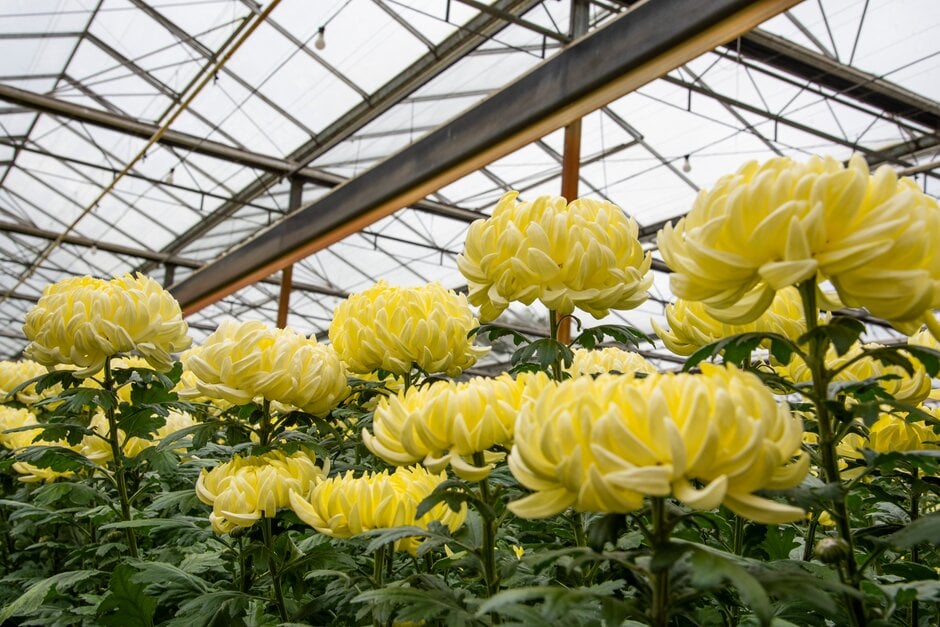How plants sense and respond to the environment
Plants sense their surroundings and actively respond to the world around them. Here you can discover how factors such as light, temperature and gravity are responsible for making your seedlings bendy or your beetroot bolt and how you can work with these responses to help your plants thrive

Quick facts
- Plants respond to external stimuli, like gravity, light and temperature, to give them the best chance of survival
- They react to these stimuli by producing chemical and hormonal signals that affect how they grow, adapt and reproduce
- Flowering is controlled by day length and temperature – gardeners can manipulate growing conditions to trigger or prevent flowering
Jump to
How plants respond to light
Light intensity affects the concentration of another hormone, gibberellin, which is responsible for controlling the length of stem between leaves (internode length):
How plants respond to day length
- Short-day plants bloom when nights are getting longer and there are fewer daylight hours. Autumn-flowering chrysanthemums are a classic example. Although they’re known as short-day plants, it’s primarily the longer periods of darkness that trigger their flower buds to form
- Long-day plants naturally flower in summer – the hardy annual love-in-a-mist (Nigella) is an example
- Day-length neutral plants aren’t triggered into flowering by the length of day or night. Tomatoes are one example – if you sow them in early spring, the first flowers develop early too
How plants respond to gravity
Even the tiny, embryonic stem (plumule) and root (radicle) of a seedling can sense gravity, and will quickly orientate themselves after germination. This means it's not a deal breaker if you sow seeds or plant bulbs the wrong way up.
How plants respond to touch
Commonly seen examples of this response include:
- Tendrils grasping a support by curling around it – contact with the support stimulates a migration of auxin and causes cells on the outside edge of the tendril to grow faster than those touching the object
- Roots growing away from solid objects – they are negatively thigmotropic – so they choose the path of least resistance through the soil
Plants may also respond to movement such as handling and brushing – known as thigmomorphogenesis. Plants that are physically disturbed produce more ethylene, which reduces stem elongation, resulting in stockier, more compact plants. Different species respond to varying degrees, but many young bedding plants, including pansies, are said to be especially responsive.
Outdoors, a strong breeze can stimulate this response. Plants grown in exposed locations stay short and sturdy so they are less at risk of wind damage. When you plant a young tree, be sure to give it a short stake so that it can flex in the wind and respond to its environment.
How plants respond to cold
With many bulbs, flower buds develop inside the bulb in warm temperatures, but it’s only after a period of subsequent cold that the flower stem emerges from the bulb. Knowing this, we can ‘force’ spring bulbs, such as hyacinths, to flower earlier by chilling them for a specific period in September or October – see our guide to forcing bulbs for Christmas.
Your next steps
- Try to provide all-round light for seedlings on windowsills indoors – turn seed trays regularly or consider adding simple grow lights. See our guide to artificial lighting
- Give climbing plants with tendrils the support of canes and wires. Tie them on to start with, giving them contact, and they’ll respond by wrapping their tendrils around to hold on themselves
- Use short stakes on newly planted trees. See our video guide to planting and staking trees
- Avoid sowing most veg when cold weather is still likely – crops such as beetroot and Swiss chard may bolt
- Force spring bulbs for an early indoor display. Put pots of bulbs in a cool dark place, at around 12°C (54°F), for six to ten weeks (depending on the type of bulb), before bringing them into a warmer location to flower
Get involved
The Royal Horticultural Society is the UK’s leading gardening charity. We aim to enrich everyone’s life through plants, and make the UK a greener and more beautiful place.